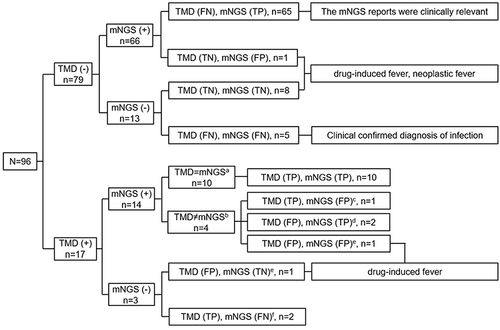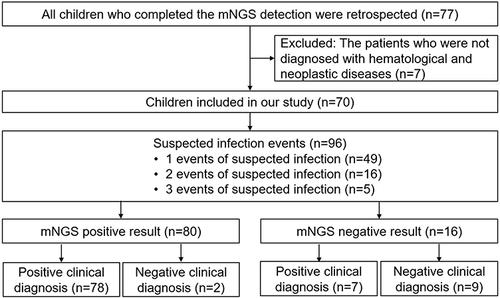Figures & data
Table 1 Test Data of the 96 Suspected Infections
Table 2 Relationship Between mNGS Detection and Clinical Diagnosis
Figure 2 Microbial detection results of the 96 suspected infections.

Table 3 Relationship Between Sampling Time of mNGS and Fever Time and Treatment Cost


